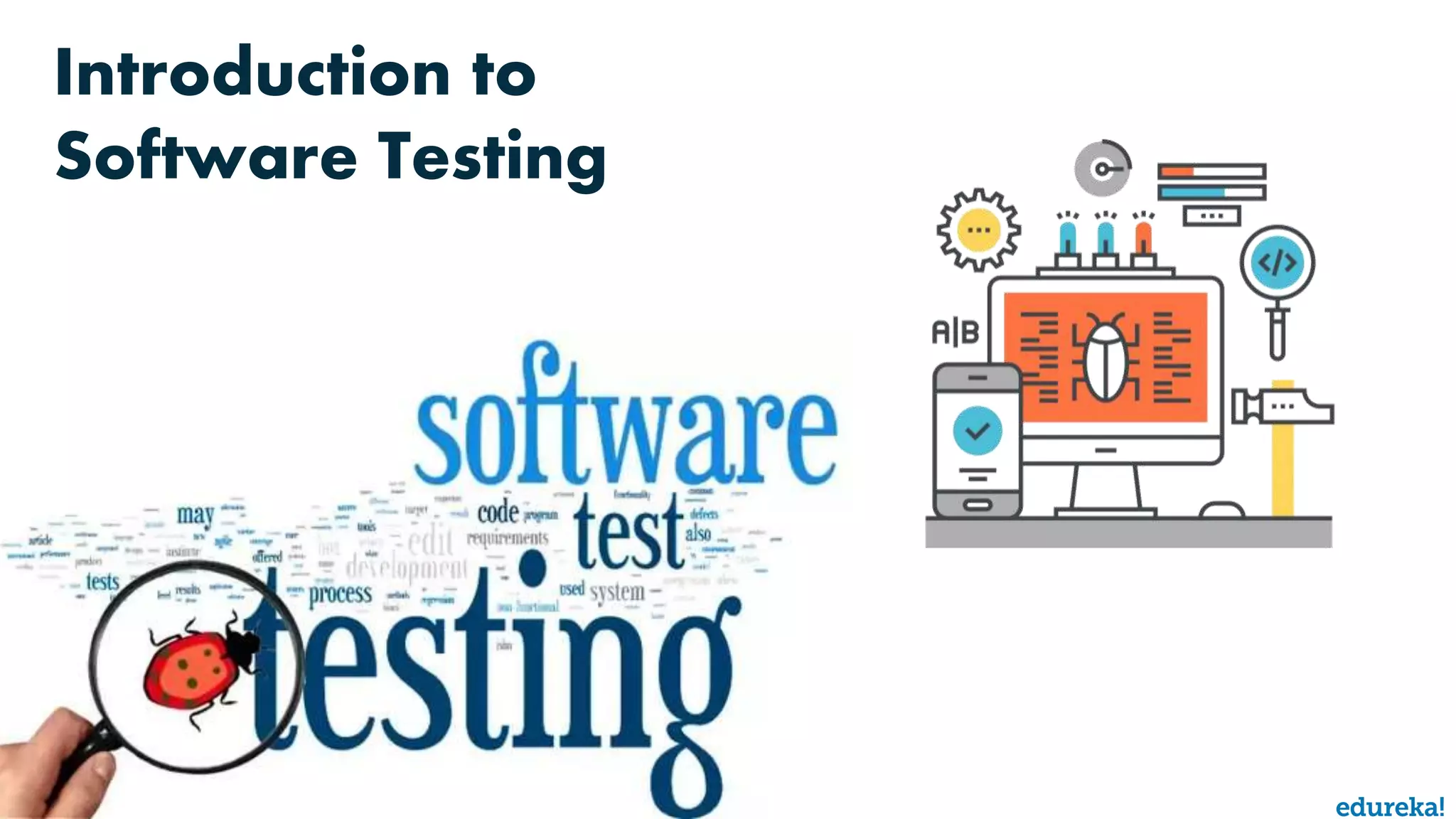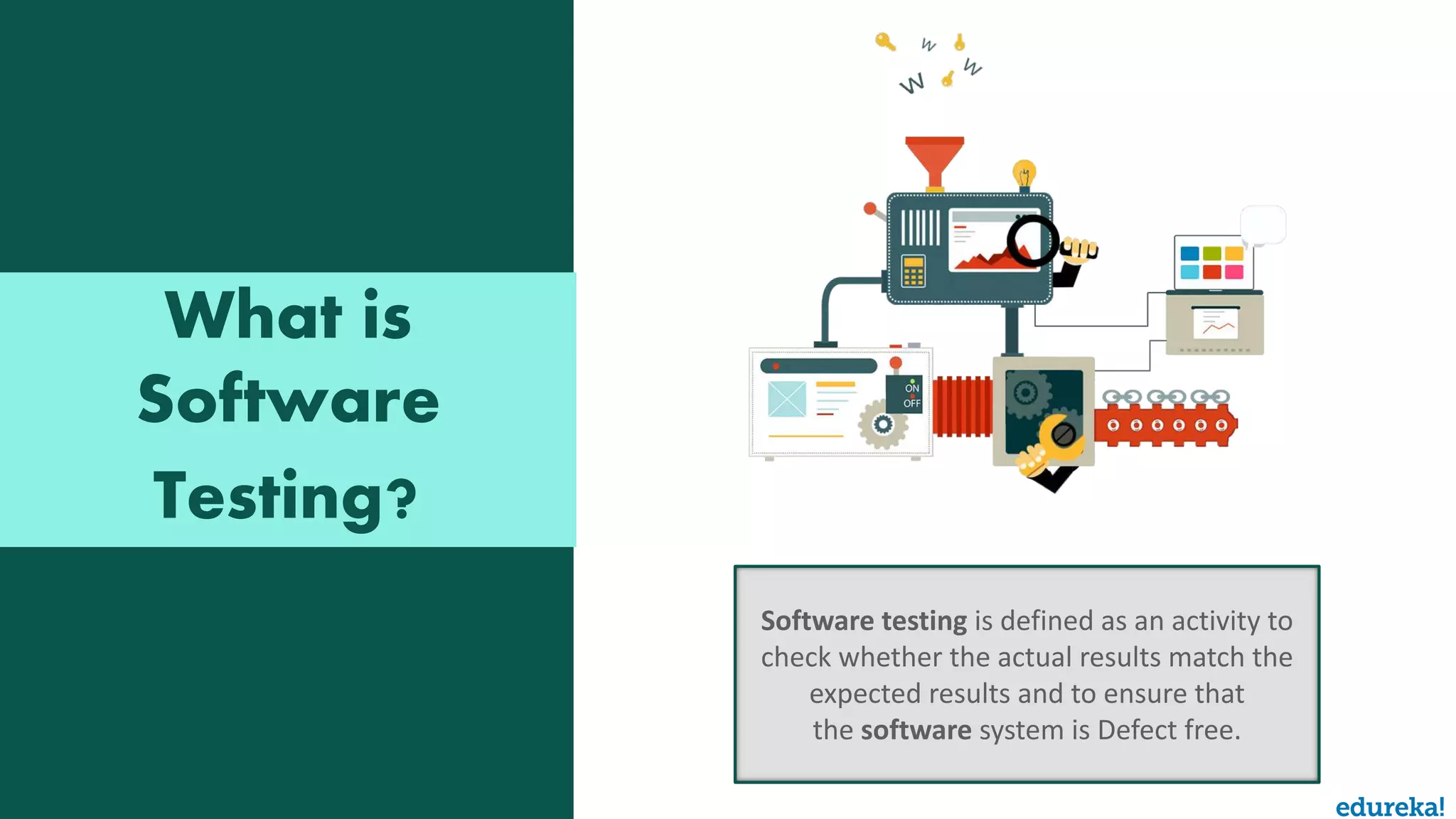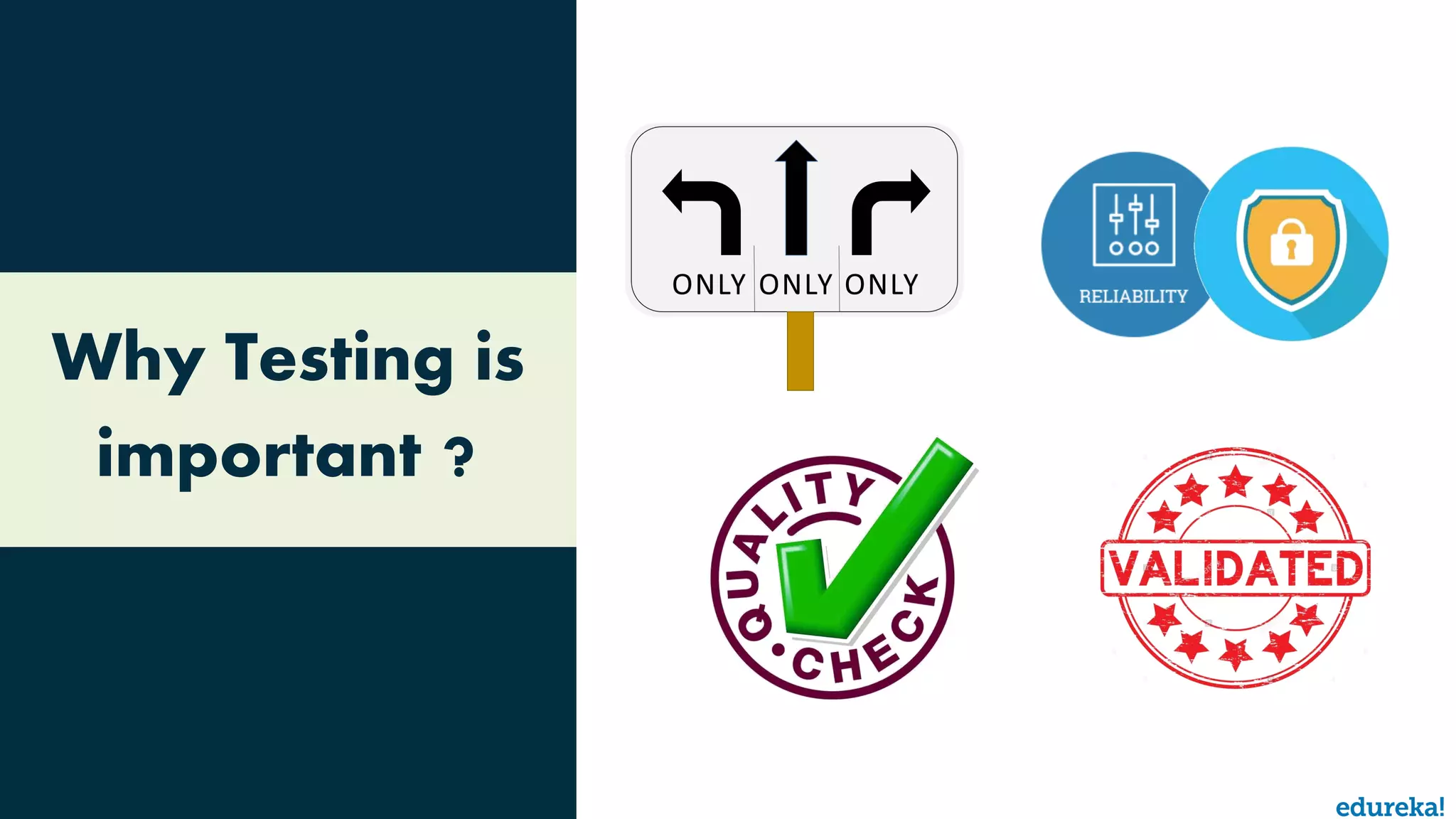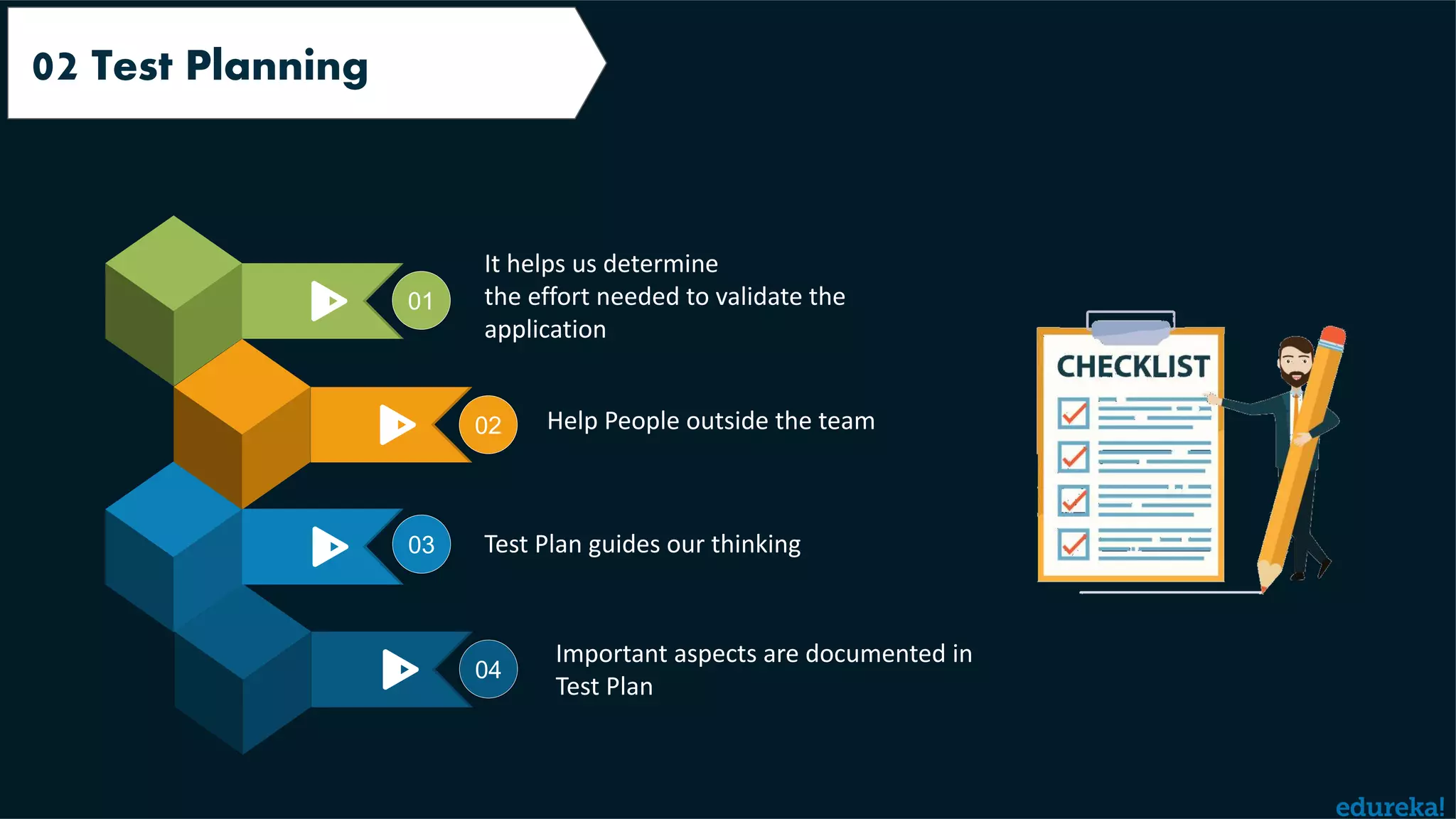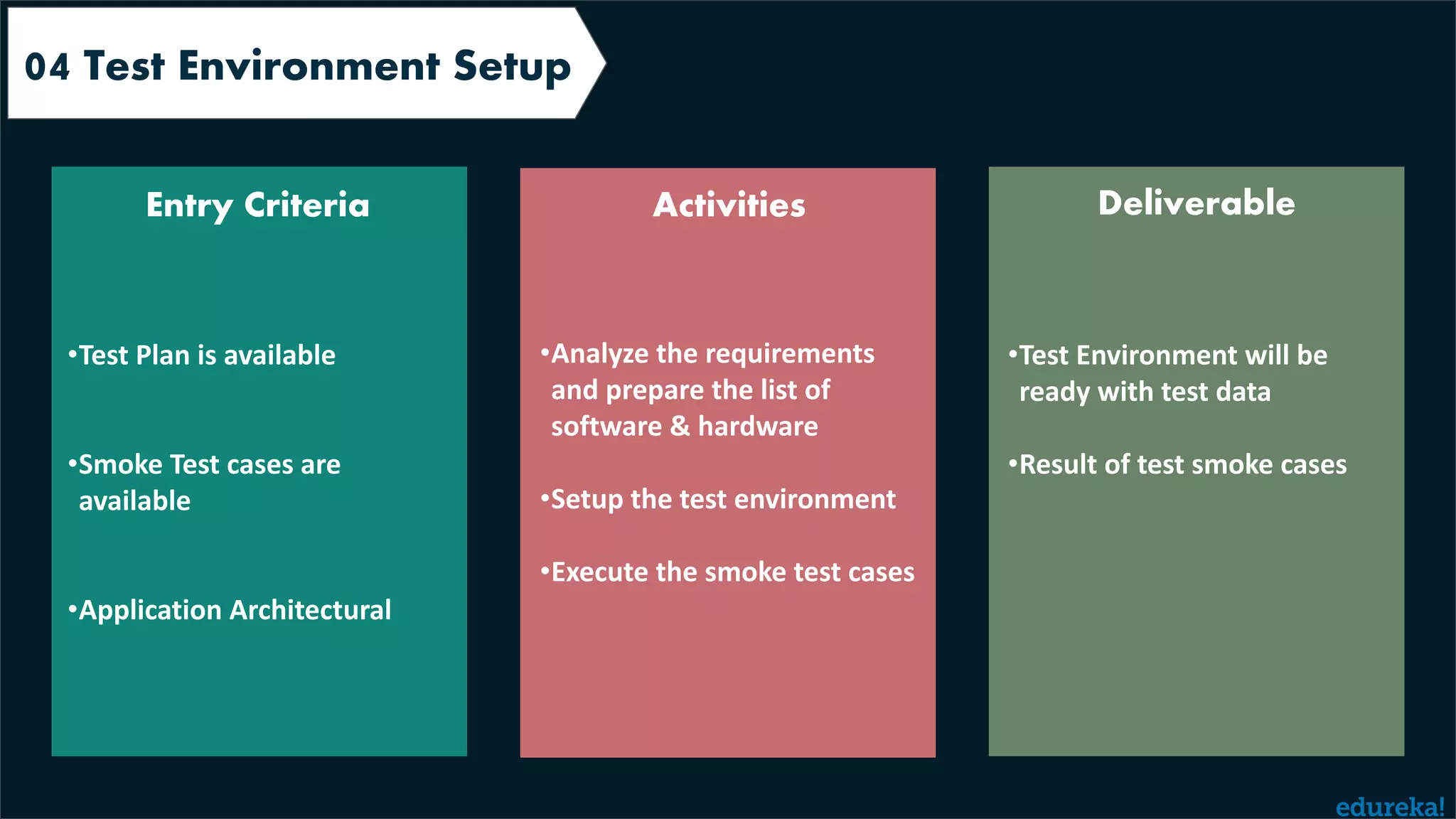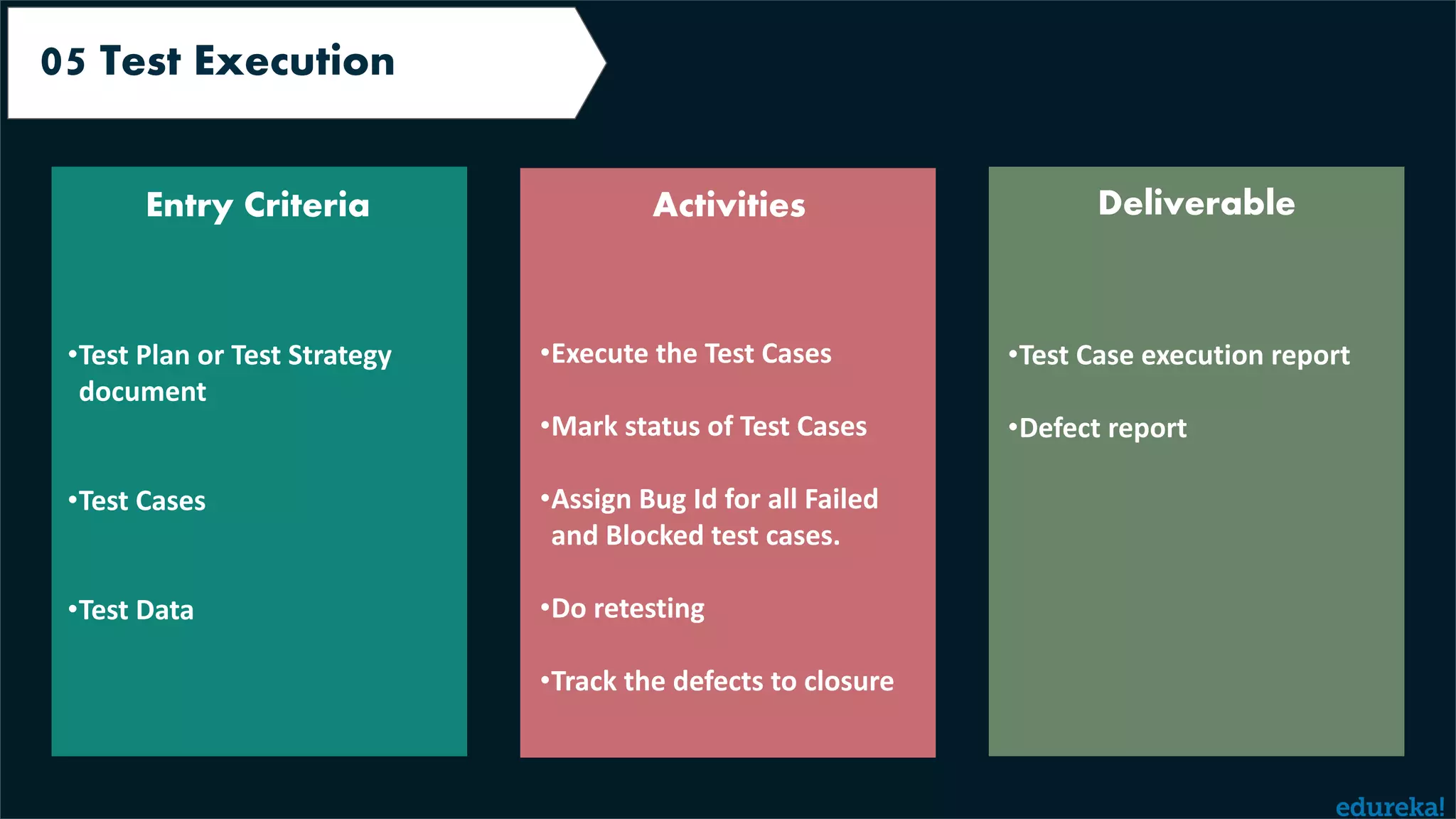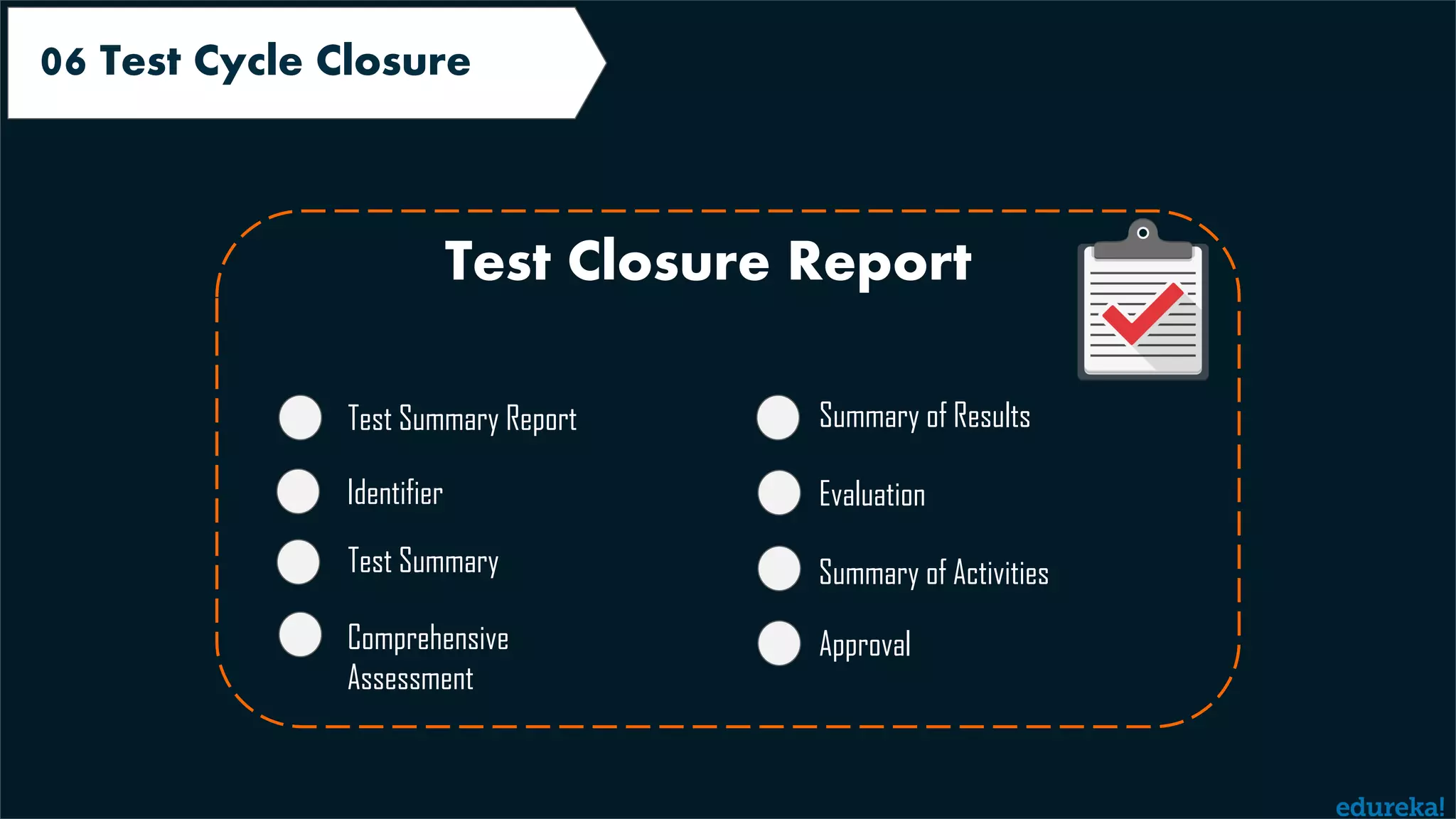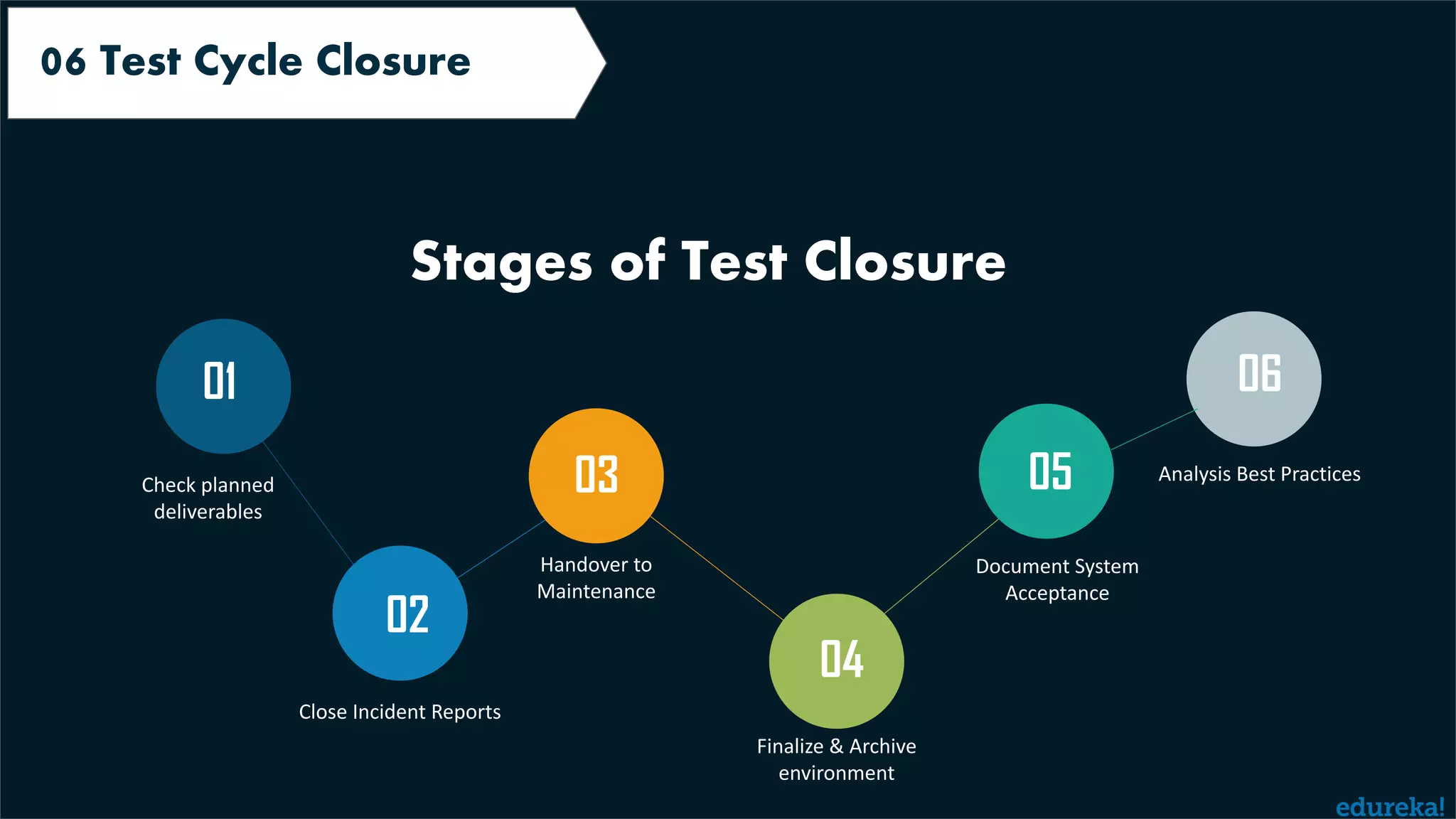The document outlines the importance of software testing, which ensures that actual results meet expected outcomes and that software is defect-free. It describes the software testing life cycle (STLC) encompassing stages such as requirements analysis, test planning, test case development, environment setup, test execution, and test cycle closure. Various roles involved in testing and best practices for test case development are also highlighted.


